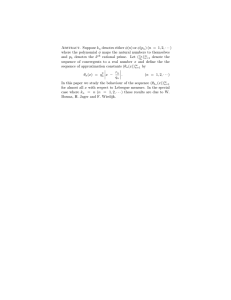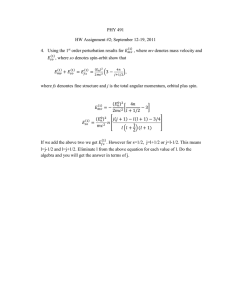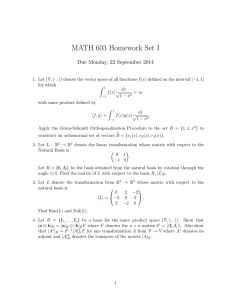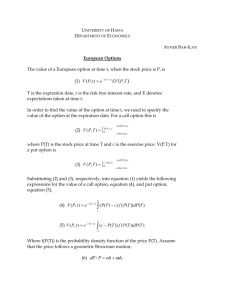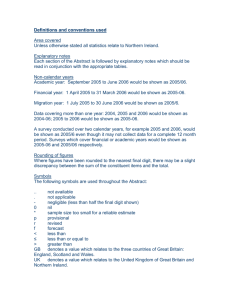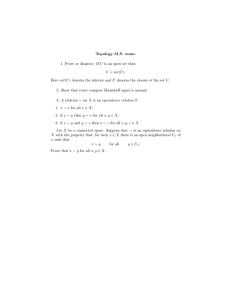11: Greek and Hebrew Letters
advertisement
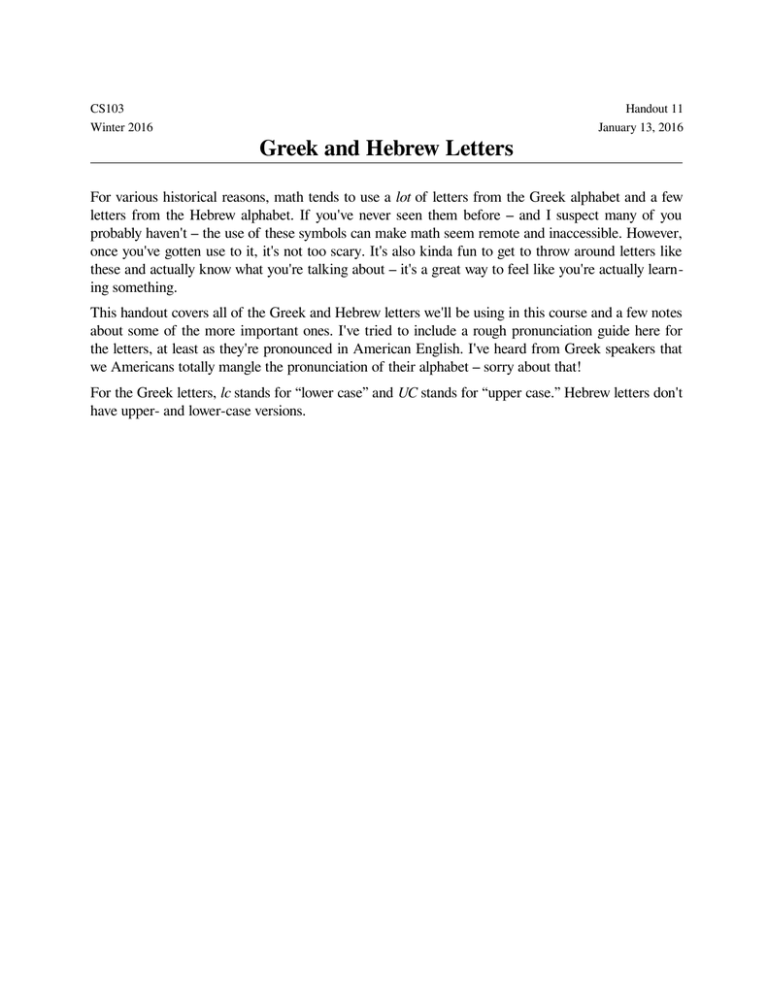
CS103 Winter 2016 Handout 11 January 13, 2016 Greek and Hebrew Letters For various historical reasons, math tends to use a lot of letters from the Greek alphabet and a few letters from the Hebrew alphabet. If you've never seen them before – and I suspect many of you probably haven't – the use of these symbols can make math seem remote and inaccessible. However, once you've gotten use to it, it's not too scary. It's also kinda fun to get to throw around letters like these and actually know what you're talking about – it's a great way to feel like you're actually learning something. This handout covers all of the Greek and Hebrew letters we'll be using in this course and a few notes about some of the more important ones. I've tried to include a rough pronunciation guide here for the letters, at least as they're pronounced in American English. I've heard from Greek speakers that we Americans totally mangle the pronunciation of their alphabet – sorry about that! For the Greek letters, lc stands for “lower case” and UC stands for “upper case.” Hebrew letters don't have upper- and lower-case versions. 2/2 Letter Name Notes α Alpha (lc) “al-fuh” In the context of CFGs, α often denotes an arbitrary string. It's also used to denote the independence number of a graph. β Beta (lc) “bay-ta” In the context of CFGs, β often denotes an arbitrary string. Γ Gamma (UC) In the context of Turing machines, Γ denotes the tape alphabet, the set “gah-muh” of symbols that may legally be written on the TM's tape. γ Gamma (lc) “gah-muh” In the context of CFGs, γ often denotes an arbitrary string. Δ Delta (UC) “del-tuh” This symbol denotes the set symmetric difference; S Δ T is the set of all elements that are in exactly one of S and T. δ Delta (LC) “del-tuh” In the context of automata theory, δ is often used to denote the transition function in the formal definition of DFAs, NFAs, and TMs. ε Epsilon (lc) Epsilon denotes the empty string; the string with no characters in it. “Ehp-sih-lon” Π Pi (UC) “pie” π Pi (lc) “pie” Lower-case π is what you usually think of when talking about pi – it's the ratio of the circumference of a circle to its diameter (roughly 3.14). Σ Sigma (UC) “sihg-muh” In formal languages, an upper-case Σ denotes an alphabet. In the context of algebra, Σ can be used to mean “the sum of zero or more things.” φ Phi(lc) “fee” In the context of propositional and first-order logic, the lower-case letter φ is often used as a placeholder for a more complicated formula. χ ψ ω ℵ Upper-case Π often denotes “the product of zero or more things.” Chi (lc) The Greek letter χ is used to denote the chromatic number of a graph. “hi,” (hard h) Psi (lc) “Sigh” The lower-case letter ψ is another letter that often serves as a placeholder in first-order logic. Omega (lc) In the context of CFGs, ω usually denotes an arbitrary string. “Oh-meh-guh” Aleph “All-eff” The Hebrew letter ℵ is used to represent a particular class of infinitely large numbers called infinite cardinals.
